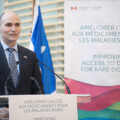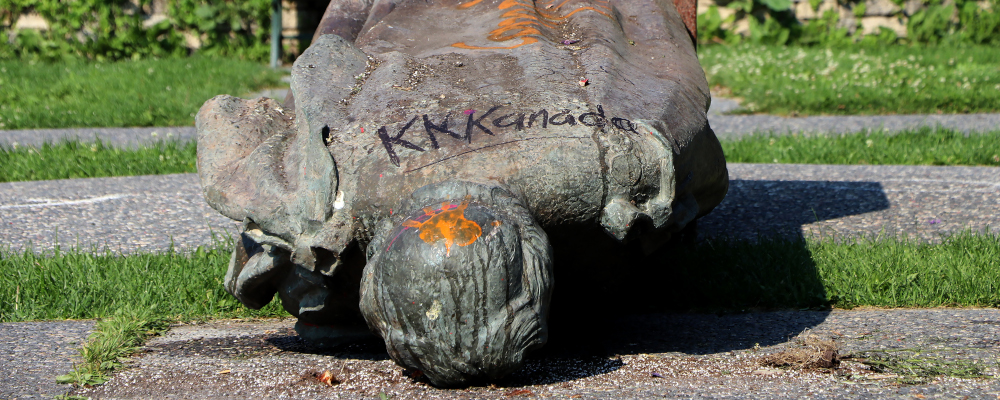Well before the COVID-19 pandemic, Ontario’s healthcare system was under strain.
Even then, it took an unacceptably long time for hip replacements, non-evasive procedures, or even just an open hospital bed. The costs and consequences in economic and human terms were significant. In response, the current Ontario government started to pursue administrative reforms to address these wait times and improve the province’s health-care system.
Then the pandemic hit.
Responding to the exigencies of the pandemic superseded these broader reforms. Attention and resources have instead been dedicated to treating the influx of Ontarians affected by the virus. Although these policy and operational choices were of course necessary, they have contributed to a severe surgical and diagnostic backlog in a system that was already under strain.
Now that Ontario appears poised to begin its recovery from COVID-19, what does that backlog really mean for those waiting for care?
For many, it means waiting months on end in pain and discomfort, with limited mobility, unable to work, relying on government benefits for income, and even developing potential mental health challenges as a result. This problem is not just about the number surgeries and procedures to be performed, it is about the quality of life of our loved ones.
If Ontario wants to see its economy recover, it will need its people to recover. This will require a dedicated plan to eliminate the surgical and diagnostic backlog in large part by getting back to the reform agenda that the government was pursuing prior to the pandemic.
Ontario’s Financial Accountability Officer’s (FAO) recent report on the Ministry of Health’s spending plan estimates that the province’s surgery backlog will reach 419,000 elective procedures and 2.5 million diagnostic procedures by the end of September 2021. The FAO projected that even assuming that hospitals operate at 11 per cent above pre-pandemic volumes for all surgeries and 18 per cent above pre-pandemic volumes for non-emergent diagnostic procedures, it will take 3.5 years to clear the surgery backlog and over 3 years to clear the diagnostics backlog.
The Ontario government has acknowledged the problem of the pandemic-induced backlog. Its 2021 budget included incremental funding of $610 million to keep operating rooms open later and to create a centralized provincial surgical waitlist program to help reduce delays in scheduling and match patients to surgeons with shorter wait times.
Ensuring patients who can be treated outside of a hospital setting are treated in the community is key.
While this incremental funding is much-needed and will increase capacity on the margins, it’s not enough. More ambitious policy solutions will be needed to reduce the backlog and ultimately address the long-term challenges facing Ontario’s health-care system.
A big part of such an agenda must be to move ahead more rapidly on the pre-pandemic reforms to community-focused care through Ontario Health Teams. The basic idea here is to create regionalized and localized teams of health-care providers and organizations (including, but not limited to, physicians, secondary care providers, community support services, and mental health services) that can coordinate patient care across a full continuum of health services. Province-wide implementation of this new model was paused during the pandemic. The government should soon resume the process. Reaching province-wide implementation of Ontario Health Teams will help get patients out of hospitals sooner and keep patients out of hospitals in the first place.
To support this implementation, the government should continue to invest in expanding hospital capacity, provide more access to home care, and deliver more healthcare services in the community. Ensuring patients who can be treated outside of a hospital setting are treated in the community is the key to providing much needed relief to hospitals.
But, to have a workforce to provide that capacity and care, creative solutions are needed to put the right incentives in place for people to choose to pursue and remain in health-care roles in Ontario.
Health-care workers are exhausted and burnt out from fighting the pandemic on the frontlines, and not all of them feel appreciated for their work. Targeting funding to create new positions will not work if existing workers are vacating their posts and potential workers do not see the value in pursuing the profession.
The first part, keeping workers in the sector in Ontario, may require that the government take a hard look at pay and working conditions, which will be complicated and expensive. It might take reconsidering the measures in Bill 124 (which mandated wage growth for Ontario’s broader public service) regarding wages for health care professionals or creating a new retention fund for those in the health-care sector.
Labour relations are challenging for every government, but it is imperative that the Ontario government get this right so that we keep our qualified workers in the province and focused on reducing the surgical and diagnostic backlogs.
To ensure a consistent supply of new workers, the government may also need to leverage the work it has done in other sectors for post-secondary education and training. It can, for instance, provide incentives to encourage individuals to become health-care workers in Ontario such as increased OSAP eligibility or bonus payments for those who work in remote or underserviced regions.
Performing more procedures outside of hospitals will also provide significant relief. The government has already started to see success through the licensing of Independent Health Facilities for the provision of cataract surgeries. This is a start and provides a useful model.
The government will need to cooperate with the hospital sector and community providers to identify other publicly-funded procedures that could be done outside of hospitals, while ensuring the highest standards of care are maintained.
The government will face challenges on all of these fronts. Labour negotiations will be tough. Investments and programs for workforce education and training will take time to see results.
Opponents of expanding the scope of practice for community providers will cry foul about the “privatization of healthcare.” But, the truth is, this is a necessary evolution of our public health-care system. With courage and cooperation, this transformation can be done in a way that’s hugely beneficial to the patients who need these services by reducing wait times and providing local access to care.
Better yet, with these types of policy changes, Ontario can start putting a real dent in the COVID-induced backlog.
Recommended for You

Kristina Acri: The Trudeau government’s universal pharmacare is a flawed plan that will have serious unintended consequences

Durhane Wong-Rieger: Rare disease patients suffer while Canadian governments dither

Tingting Zhang: Canada has tons of doctors—yet an alarming number of people have no primary-care provider. What’s going on?

Sean Speer: A single-payer pharmacare model would be costly—and even worse, ineffective and unnecessary









